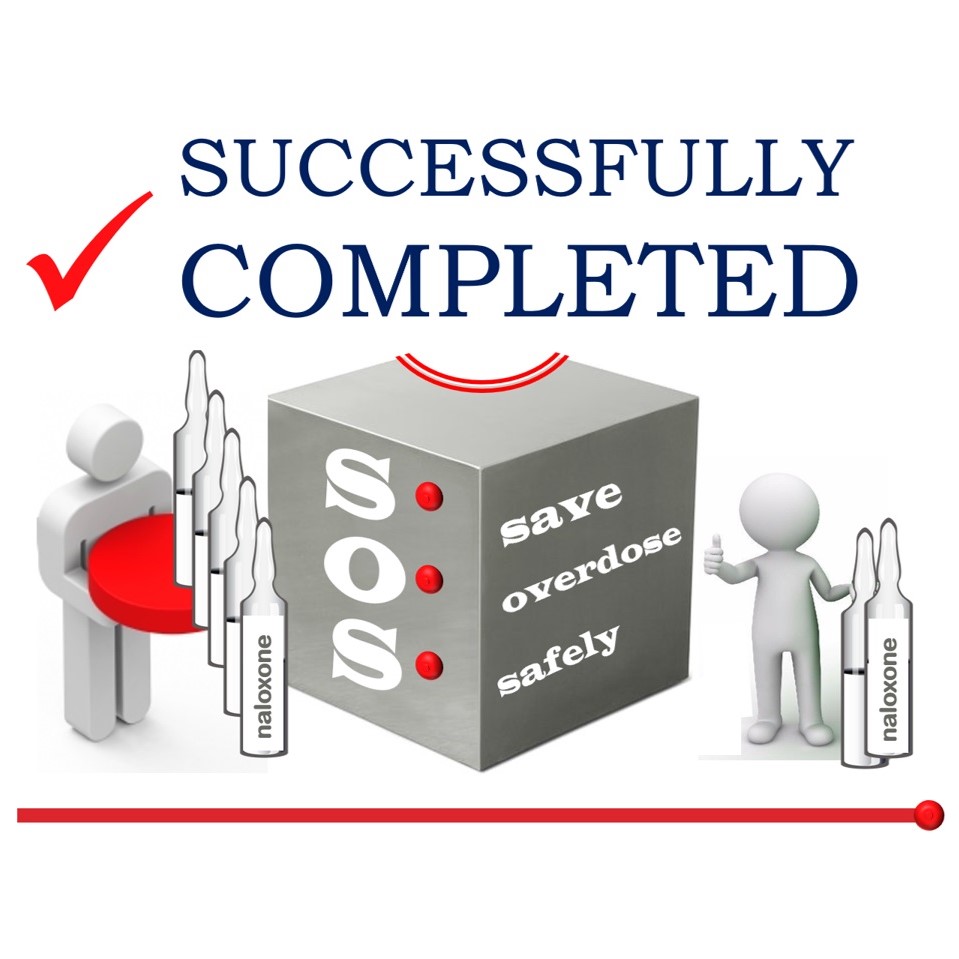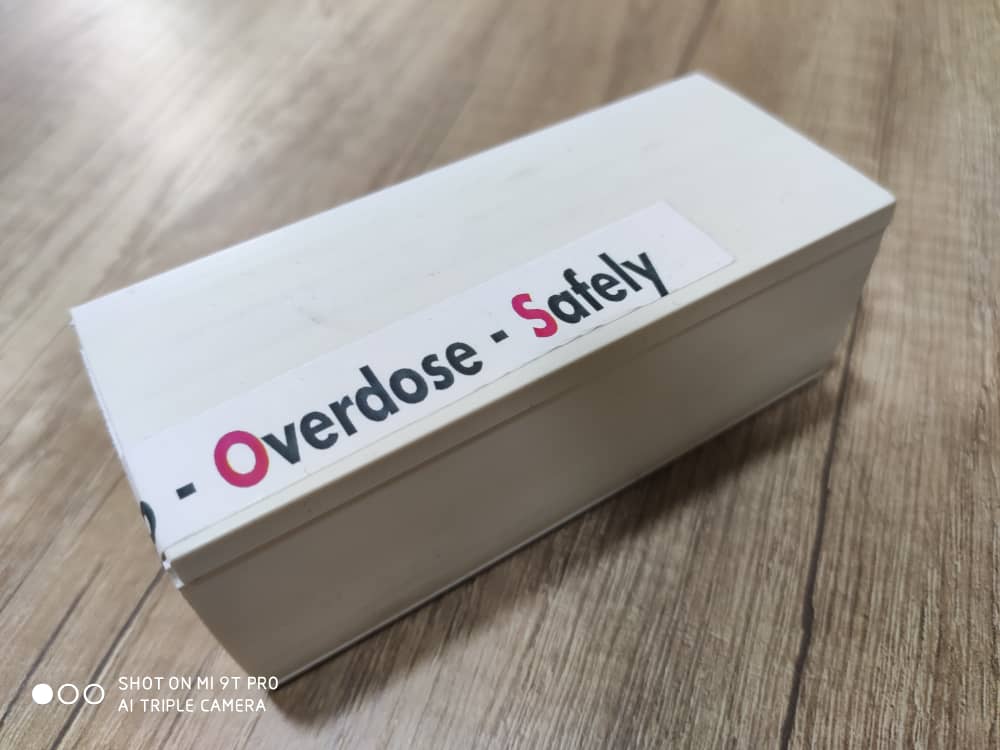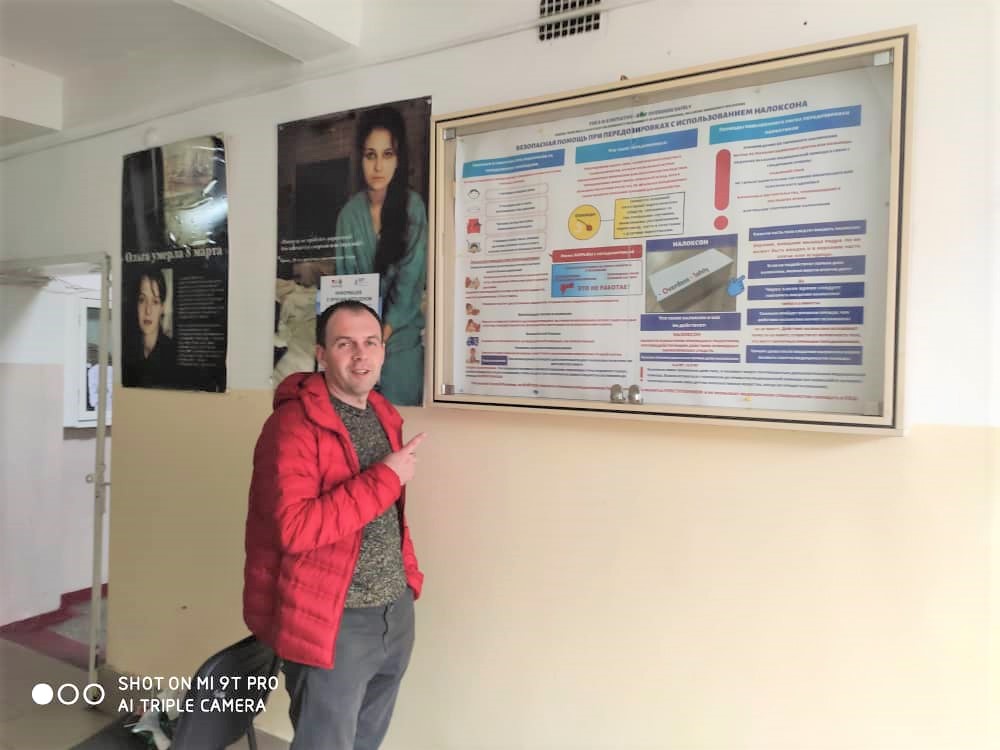
In Kyrgyzstan, the S-O-S (“Stop Overdose Safely”) project has been successfully completed. The project focused on innovative approaches to opioid overdose prevention, and the project report is already available.
The initiative was a part of the Joint UNODC–WHO Programme on Drug Dependence Treatment and Care, Re-Integration and AIDS Prevention.
GLORI Foundation interviewed people who were the immediate implementers of the project activities in Kyrgyzstan: Kubanychbek Ormushev, National Programme Officer (UNODC Programme Office in the Kyrgyz Republic), Danil Nikitin of GLORI Foundation (S-O-S project National Research Partner), Sergei Bessonov of the Kyrgyz Harm Reduction Network Association, and Tatiana Musagalieva, the S-O-S project Master Trainer.
“The trainings that were a part of the project, were really effective and made difference. After the trainings and having the naloxone kits that were distributed among people in high-risk communities, we saved lots of lives. People who attended the trainings, are now demonstrating much safer behaviors” – this is a feedback from the S-O-S peer trainers.
“Now we are able to identify signs of overdose, we are not afraid of calling the ambulance and are confident about our capacity to effectively communicate with medical professionals about our needs” – this is a feedback from the project beneficiaries. They confirm that naloxone often appears critically important and most effective substance that saves lives of people who are not able to properly manage their dose of heroin and suffer from overdose.
“Your project is unique as it provides support not only to people who use drugs but also to people likely to witness opioid overdose, including peers and family members. There is no other project of this kind that would utilize this network approach” – this is another feedback left by a project beneficiary.
Kubanychbek Ormushev: Naloxone saves lives, it has been proved by multiple research and does not need to be supported by additional evidence. The key goal of the project was to develop a model for saving lives through expanding the availability and accessibility of community management of opioid overdose, including training and take-home naloxone. The final target population were people likely to witness opioid overdose, including peers and family members. In Kyrgyzstan the project worked in the towns of Bishkek, Kant and Sokuluk, and almost five thousand people benefited from it. To these people we distributed emergency kits with neatly packed ampoules of Naloxone, syringes, alcohol swabs, and latex gloves.

Kits with neatly packed ampoules of Naloxone, syringes, alcohol swabs, and latex gloves – these kits were distributed to the S-O-S project participants in Kyrgyzstan in addition to training
Danil Nikitin: It’s hard to estimate the overdose prevalence in Kyrgyzstan. Availability of data regarding the rates of fatal and non-fatal overdose among PWID in Kyrgyzstan is generally limited, as centralized data collection and reporting systems on overdoses are underdeveloped. There are an estimated 25,000 people who use drugs in Kyrgyzstan. Currently opioids and cannabis are considered the most prevalent drugs in Kyrgyzstan.
Sergei Bessonov: About 70,000-100,000 people die from opioid overdose each year. At the global level, overdose is the leading cause of avoidable death among people who inject drugs. The S-O-S data show that not only heroin overdose cause risk, but also misuse of stimulants and novel psychoactive substances (NPS). They step by step become widely spread among people who use them not via injections. Due to their effects they can cause highly risky behavior.
Drug-related mortality is significantly underreported in Kyrgyzstan due to the stigma associated with drug consumption among families. This leads to underestimation of the resources and services needed to provide overdose prevention services, as well as information to families on how to address cases of drug overdose.
Tatiana Musagalieva: The project showed the extreme importance of introducing a country-wide database that would help with documenting cases of overdose and track their prevalence by regions. These data can help with estimating resources needed for providing effective services, and also inform the funds allocation decisions.

Sergei Bessonov of the Harm Reduction Network Association and his Team posted S-O-S overdose prevention materials on the news stand at the Republican Narcological Center.
Kubanychbek Ormushev: All the data collected as a part of the project, are being analyzed now. When ready, the data will be properly presented. The project was an important effort made made to expand naloxone availability to non-medically trained people. It focused on training lay people who are likely to witness an opioid overdose. They were trained in overdose recognition and response (e.g. rescue breathing). The critical component of the training was how to administer naloxone.
Tatiana Musagalieva: Let me highlight another unique achievement of this project: Out of almost five thousand beneficiaries more than 29% are women. These are women who use drugs, and also women from drug users’ network. I think, it is very important to consider correlation between overdose and gender-based violence. For example, at the recent International conference that focused on implementing an innovative GBV-prevention intervention model, Dr Assel Terlikbaeva of the Global Health Research Center of Central Asia shared their team’s findings on the correlation between sexual violence and increased use of opioids for managing physical pain, PTSD, depression and anxiety caused by violence in women at-risk for HIV in Kazakhstan. The report highlighted increased risk of overdose associated with opioids misuse.
Danil Nikitin: In Kyrgyzstan, the project did not stop even after the COVID-specific restrictions and self-isolation were applied. Even though all data collection activities were closed by then, people used to apply to the project staff with questions regarding drug risks and overdose management. The staff members found a solution: they provided consultations over the phone and conference-calls.
Tatiana Musagalieva: It is true. As we all know, the vast majority of overdoses are accidental, and people who called us, expected our advice immediately. In general, four out of every five deaths from overdose are preventable. There are several behavioral risk factors for overdose. Risk is increased when opioids are injected (especially intravenously). Risk is high when alcohol or other sedative drugs (e.g. benzodiazepines) are consumed along with heroin. People whose tolerance is reduced and who are using alone, with no one around to intervene, are also exposed to higher risk of overdose.
Sergei Bessonov: The project was conducted with finance support from the UNODC and WHO. It is the UNODC and WHO Guidelines that we followed while designing overdose-prevention and Naloxone-use trainings. These trainings were primarily for people likely to witness an overdose.
Kubanychbek Ormushev: The guidelines that Sergei mentions, were published by WHO on 4 November 2014. They are evidence-based and aim to reduce the number of opioid-related deaths globally. The guidelines recommend countries expand naloxone access to people likely to witness an overdose in their community, such as friends, family members, partners of people who use drugs, and social workers. In most countries, naloxone is currently accessible only through hospitals and ambulance crews who may not manage to get help to the people who need it fast enough.
Danil Nikitin: The project targets include saving lives by making naloxone and training on overdose management available to all people likely to witness an overdose, including peers and family members. As the Principal Investigator in Kyrgyzstan, I am glad to confirm that the target has been reached. It was possible due to relevant technical and scientific support and smooth team work and international collaboration.
The S-O-S Working Group in Kyrgyzstan included GLORI Foundation (Mr Danil Nikitin), Republican Narcological Center (Mr Ruslan Tokubaev), the Kyrgyz Harm Reduction Network Association (Mr Sergei Bessonov) and Partnership Network (Mr Aibar Sultangaziev).
The project Working Group would like to express its appreciation to UNODC and WHO, and personally to Mr Kubanychbek Ormushev who coordinated this project on behalf of the UNODC in the Kyrgyz Republic. We are very grateful to Ms Anja Busse, the Programme Officer at the UNODC in Vienna, and Mr Dzmitry Krupchanka, Medical Officer at WHO in Geneva, for their significant support throughout the project.
Special thanks to Professor Paul Deitze, Program Director at the Burnet Institute in Australia, who provided immediate supervision in data collection and leads the on-going data analysis.
The project was implemented in close collaboration with international experts in overdose prevention Dr Assel Terlikbaeva (Global Health Research Center of Central Asia, Kazakhstan), Dr Mahbat Bahromov and Mr Jonbek Jonbekov (Prisma Research Center, Tajikistan), and Tetiana Kiriazova and Olena Chernova (Ukrainian Institute on Public Health Policy). Their generous input and sharing scientific and practical ideas helped us very much.
The project was successful due to ongoing support from UNODC coordinators in Kazakhstan (Ms Gulnur Bolyspaeva), Tajikistan (Ms Mutabara Vohidova), and Mr Sergii Rudyi (Ukraine).
Implementation of the project in Kyrgyzstan would have been impossible without the phenomenal and highly professional help from the field coordinators Dr Venera Januzakova and Mr Aibek Duishenaliev (Republican Narcological Center), Mr Almaz Asakeev and Ms Alisa Osmonova (Partnership Network), and Ms Tatiana Musagalieva and Ms Alexandra Kachkynalieva (Kyrgyz Harm Reduction Network Association). We very much appreciate their commitment to providing excellent services to people who need their help in the towns of Bishkek, Sokuluk and Kant.
We are grateful to all project beneficiaries for their responsiveness and willingness to participate in the project. Without their commitment and desire, the results achieved would have been impossible.

















